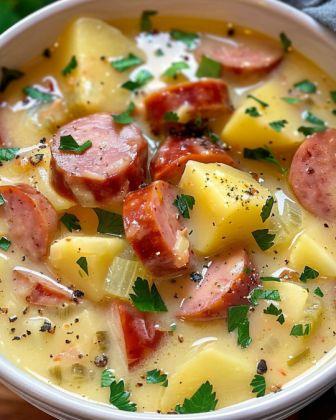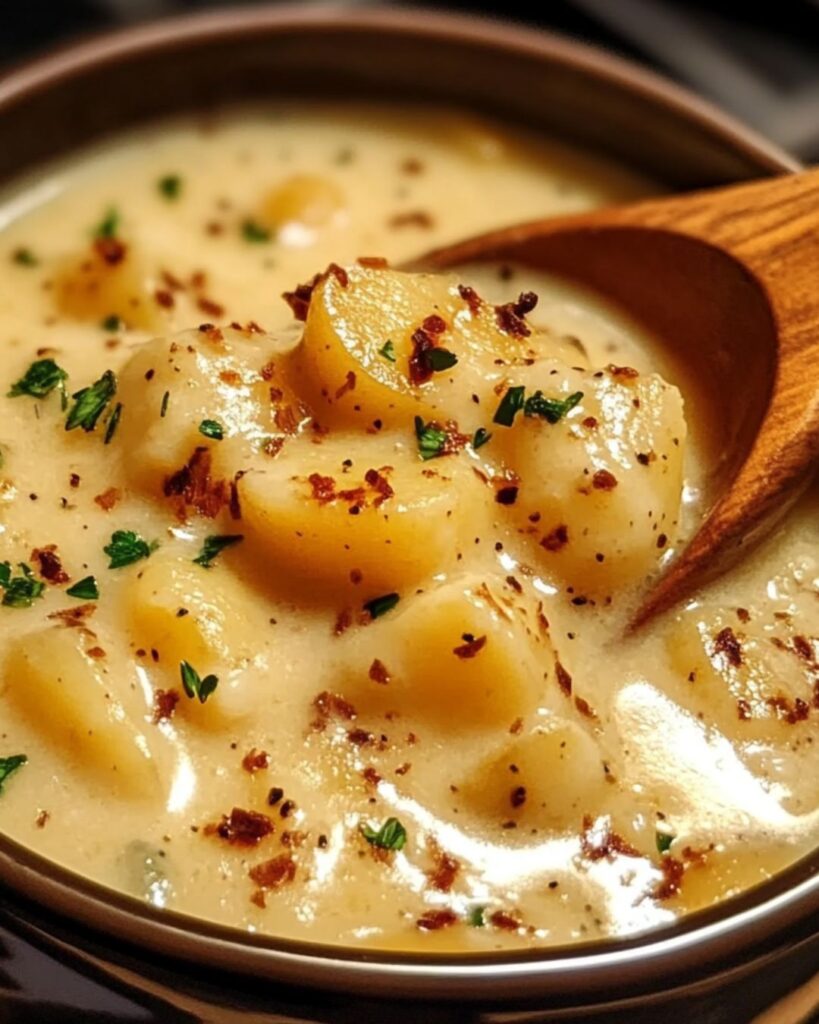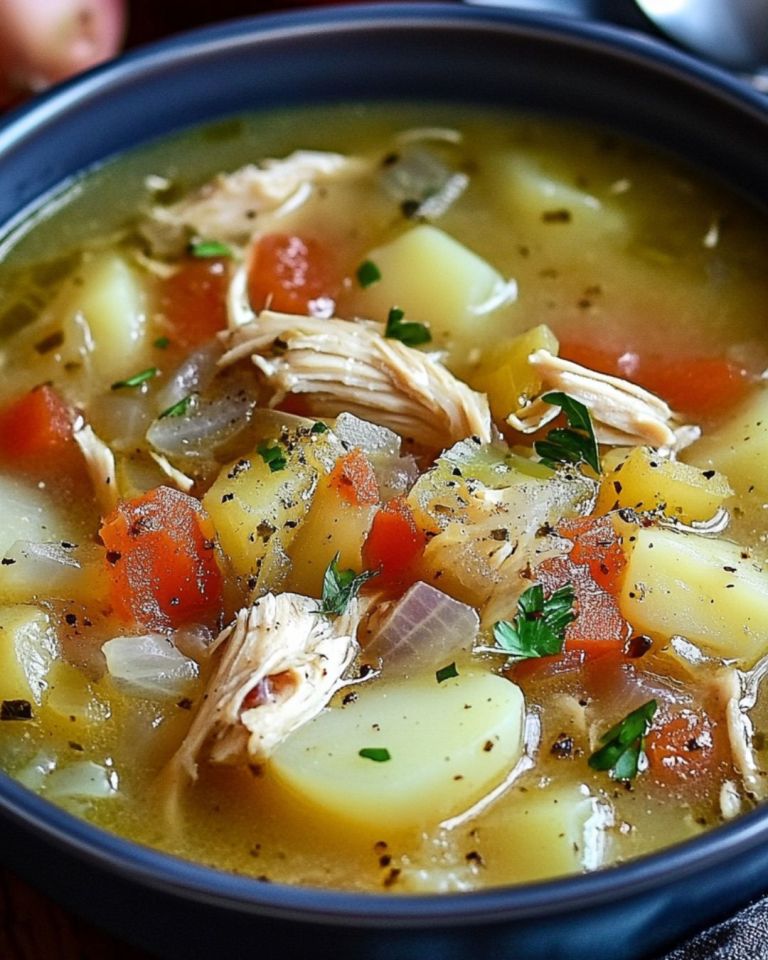Potato Kielbasa Soup

Ingredients:
- 1 tablespoon olive oil
- 1 lb. kielbasa sausage, sliced (use turkey kielbasa if preferred)
- 1 medium onion, chopped
- 2 cloves garlic, minced
- 4 cups chicken broth
- 4 large potatoes, peeled and cubed
- 3 large carrots, peeled and sliced
- 2 celery stalks, chopped
- 1 teaspoon dried thyme
- 1 teaspoon dried parsley
- Salt and pepper to taste
- 1 cup heavy cream
Directions:
- Cook Sausage:
- Heat olive oil in a large pot over medium heat.
- Add kielbasa slices and cook until browned. Remove and set aside.
- Sauté Vegetables:
- In the same pot, cook the chopped onion until softened, about 3-4 minutes.
- Add minced garlic and cook until fragrant, about 1 minute.
- Add Broth and Veggies:
- Pour in chicken broth.
- Add cubed potatoes, sliced carrots, and chopped celery.
- Stir in dried thyme and parsley. Season with salt and pepper.
- Simmer:
- Bring to a boil, then reduce heat and simmer until potatoes and carrots are tender, about 20 minutes.
- Finish Soup:
- Stir in heavy cream and return kielbasa to the pot.
- Simmer for an additional 5 minutes, until heated through.
Prep Time: 15 minutes | Cooking Time: 30 minutes | Total Time: 45 minutes | Servings: 6
Crock Pot Crack Potato Soup

Ingredients:
- 6 cups diced potatoes, peeled (russet or Yukon gold work best)
- 1 cup shredded sharp cheddar cheese
- ½ cup crispy, cooked, and crumbled bacon
- 1 packet ranch seasoning mix
- 4 cups chicken broth (or vegetable broth for a vegetarian option)
- 1 cup heavy cream (or half-and-half for a lighter version)
- 1 small onion, finely chopped (optional)
- 2 cloves garlic, minced (optional)
- Salt and pepper to taste
- Optional garnishes: extra cheese, bacon bits, green onions, chives, or sour cream
Instructions:
- Prepare the Ingredients:
- Dice the peeled potatoes into uniform pieces for even cooking. Optionally, sauté the onion and garlic in a pan for extra flavor.
- Layer the Crock Pot:
- Add the diced potatoes, sautéed onion (if using), and garlic to the bottom of the crock pot.
- Sprinkle the ranch seasoning mix evenly over the potatoes. Add the crumbled bacon and shredded cheese on top.
- Add the Liquid:
- Pour the chicken (or vegetable) broth over the ingredients, making sure the liquid covers the potatoes. Stir everything gently to combine.
- Cook the Soup:
- Cover the crock pot and cook on low for 7-8 hours or on high for 4 hours, until the potatoes are tender and can be easily mashed.
- Finish with Cream:
- Once the potatoes are tender, stir in the heavy cream (or half-and-half). Use an immersion blender for a creamier texture or leave the soup chunky.
- Taste and adjust seasoning with salt and pepper.
- Serve:
- Ladle the soup into bowls and garnish with extra cheese, bacon bits, green onions, chives, or a dollop of sour cream, as desired.
Irish chicken Cabbage and Potato Soup

Ingredients:
- 1 lb chicken breast, diced
- 1 large onion, chopped
- 4 cups chicken broth
- 2 large potatoes, peeled and diced
- 1/2 head cabbage, shredded
- 2 cloves garlic, minced
- 2 tbsp olive oil
- 1 tsp dried thyme
- Salt and pepper, to taste
Instructions:
- Cook Chicken: In a large pot, heat olive oil over medium heat. Add diced chicken and cook until browned. Remove and set aside.
- Sauté Vegetables: In the same pot, add chopped onion and minced garlic. Cook until onion is translucent.
- Combine Ingredients: Return chicken to the pot. Add chicken broth, potatoes, and thyme. Bring to a boil, then reduce heat and simmer until potatoes are tender, about 15 minutes.
- Add Cabbage: Stir in shredded cabbage and cook for another 5 minutes. Season with salt and pepper.
- Serve: Ladle soup into bowls and serve hot.
Prep Time: 10 minutes
Cooking Time: 25 minutes
Total Time: 35 minutes
Servings: 6
